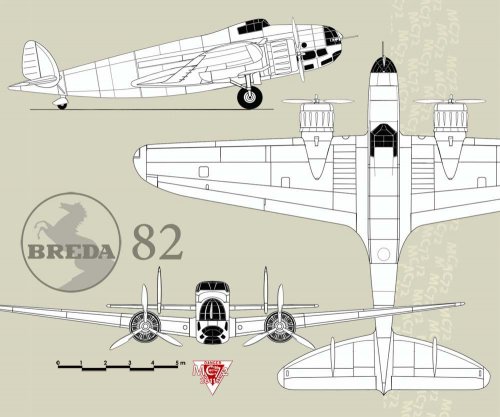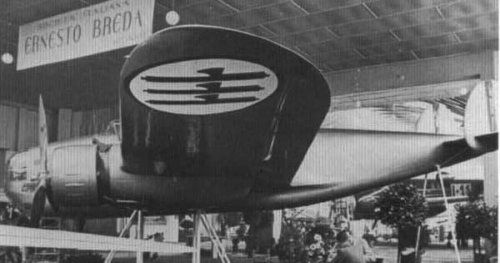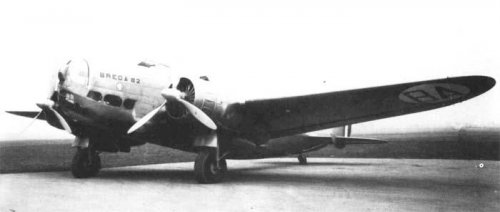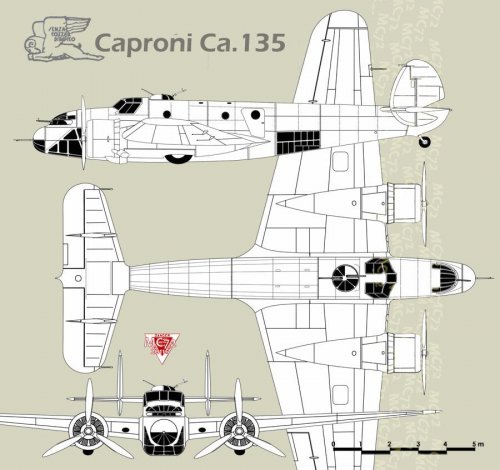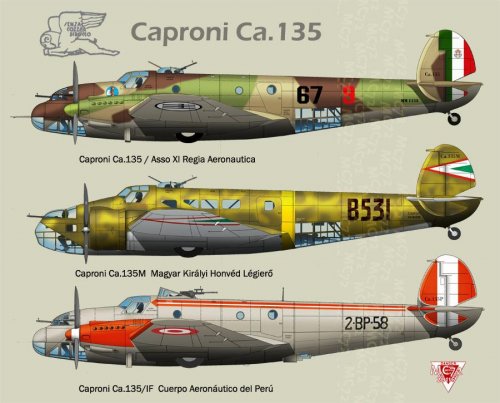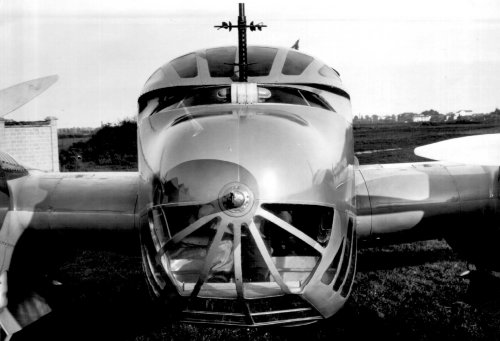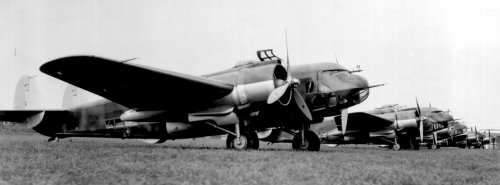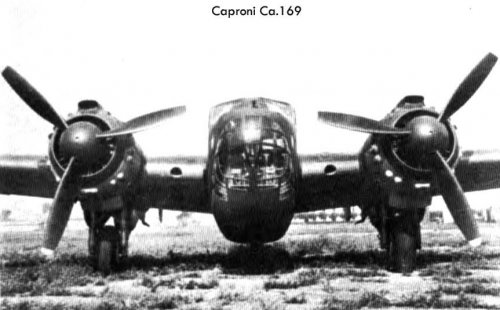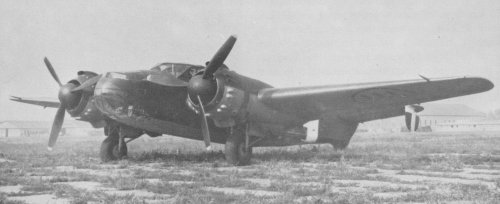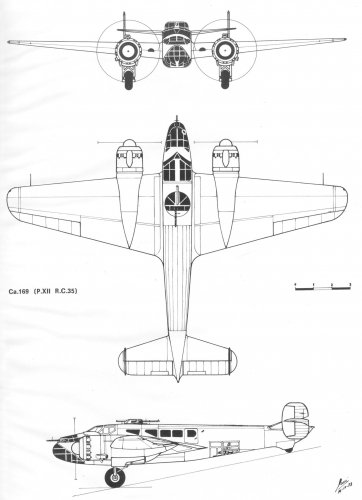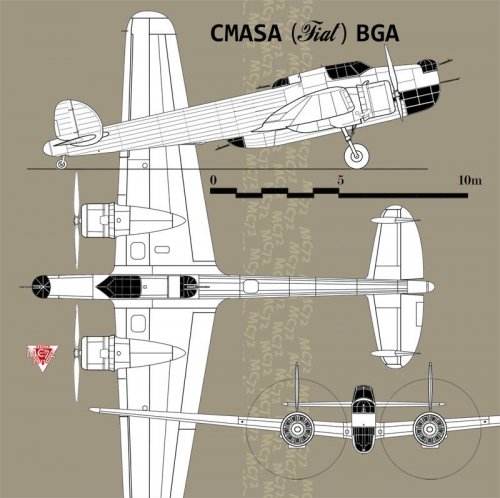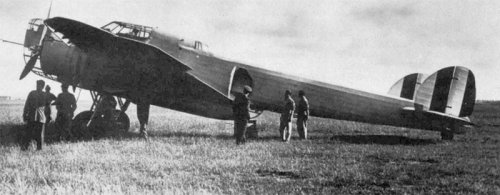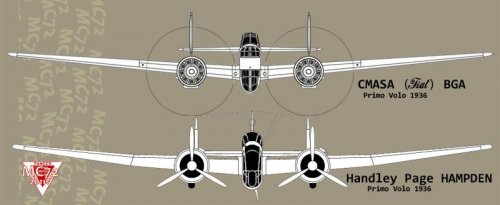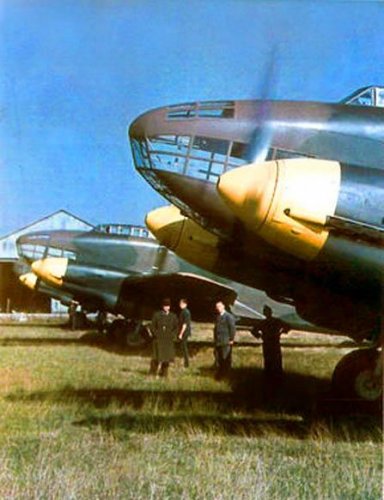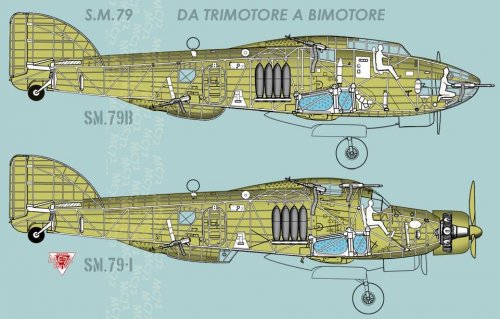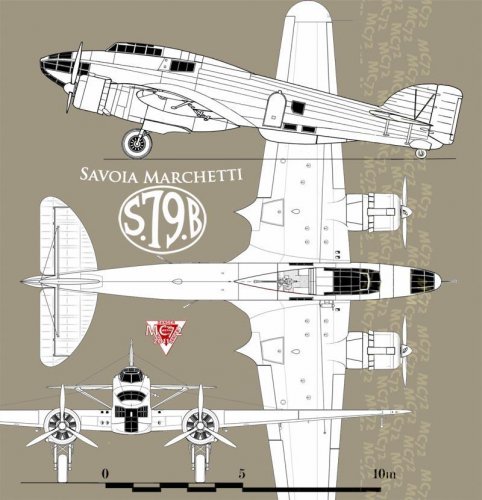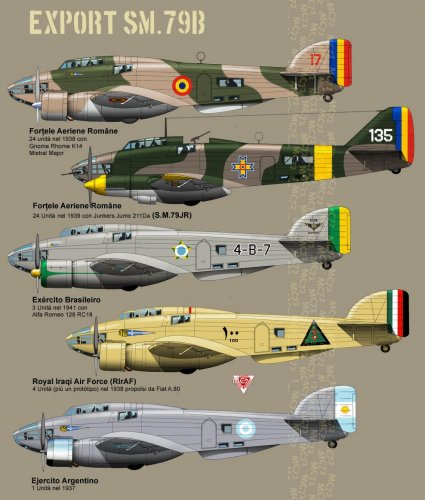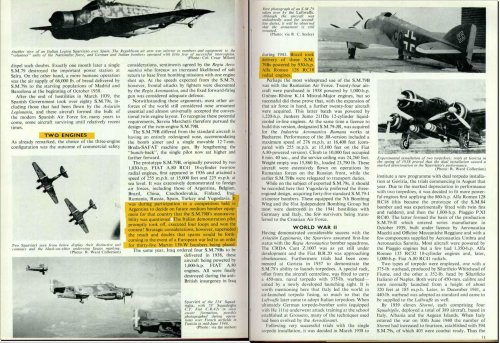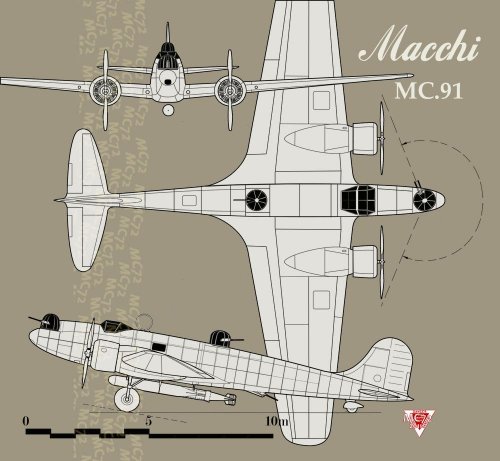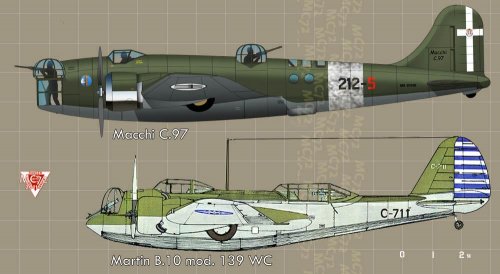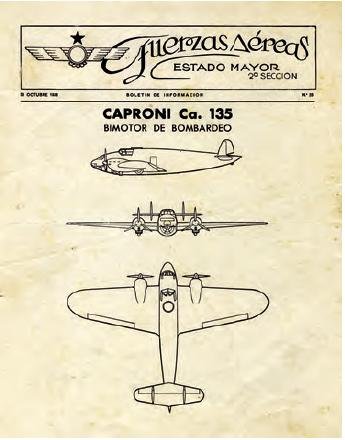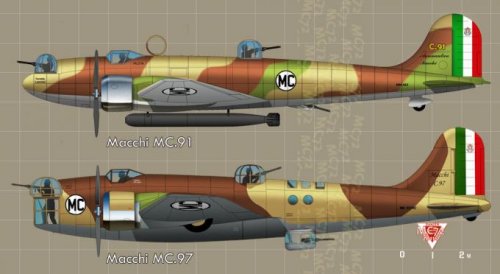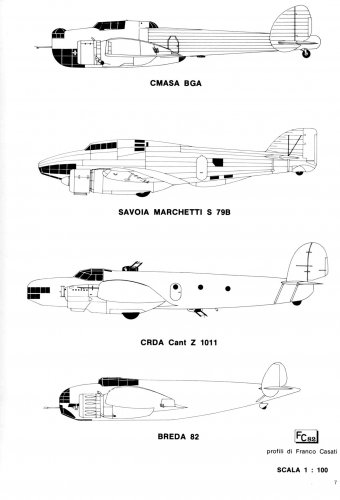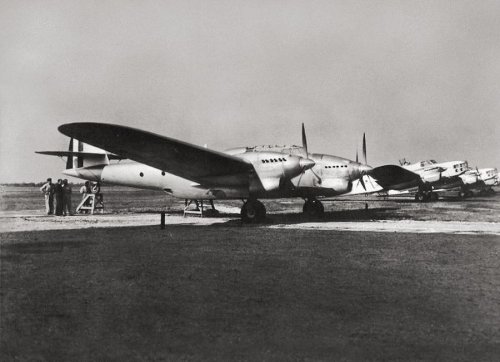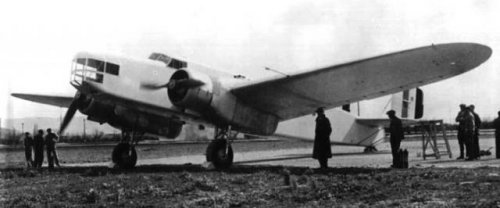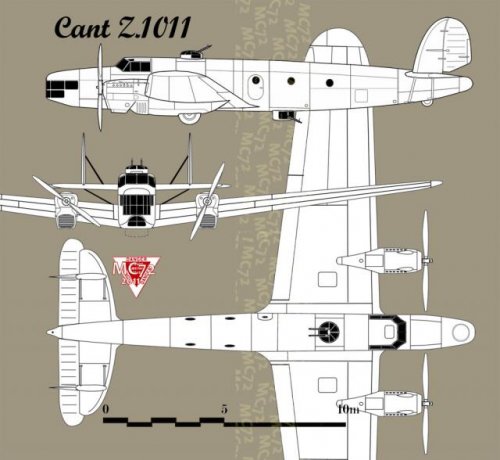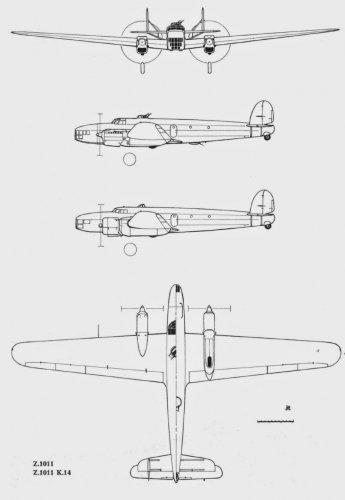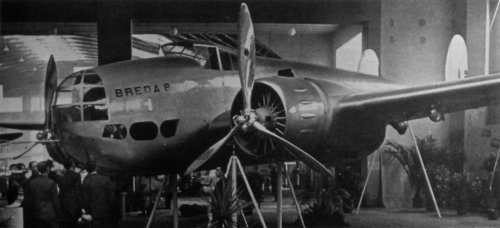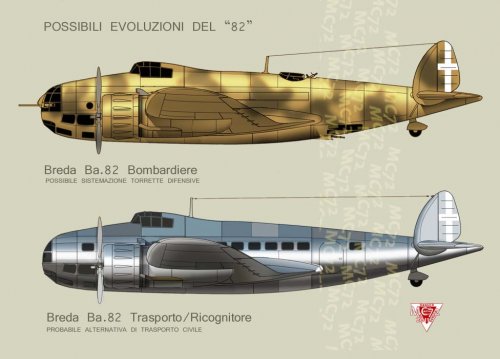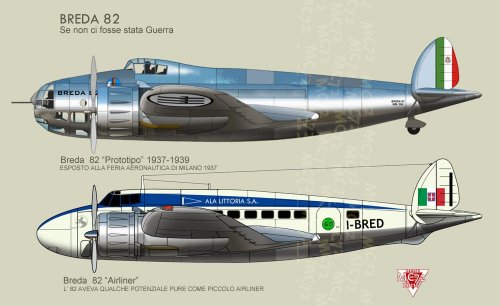MC72
ACCESS: Confidential
- Joined
- 16 October 2010
- Messages
- 91
- Reaction score
- 116
Contest 1934: A speedy bomber for the Royal Italian Air Force
Talking about the characteristics and necessities of competition held by the Italian Ministry of Aeronautics in 1934 for a Terrestrial bomber <Veloce> (speedy) defined with the intention to evade enemy fighters; You must place in the political, economic and military at the time. The First World War ended in 1918 but ill-treated wounds and continued long effects, so much so that gave foot to the rise of fascism in Italy, proclaiming a new order and a strong policy of autarchy; The economy after the Wall Street Crack in 1929 worsened conditions in many European countries and in particular for the "Sentenced" (from Versalles) German Weimar Republik, which suffered more than other the great economic depression in Europe, this fertile environment, prepared the rise of Hitler and his ideology of intolerance, based on the promise to restore lost pride and strength of Germany ..... for a people in to the limit of his strength and without a clear future, this "messianic" message, was received with greater fervor; Now from 1933 onwards the policy of Hitler was very aggressive towards other countries; France occupied the largest and richest regions of the Ruhr and Alsace, large numbers of Germans lived in the new nation of Poland, the British had take over the former overseas colonies of Germany etc etc. So, The new Germany government held by the new Chancellor Adolf Hitler, proclaimed a new Reich, claim for theiroldboundaries and its right to rearm the Nation; In 1934 abandoned the Conference on Disarmament in Geneva and a week after announcing the withdrawal from the League of Nations; relations between Germany and Austria began to degenerate, and the Austrian Chancellor Dolfus was killed at the end of July of 1934 by Austrian Nazis; Reaching the maximum tension in Europe, Mussolini threatened to intervene if Germany invaded Austria, sounded the general alarm throughout Europe and beginning a opened arms race, so in a few months at the end of 1934, all major European states called for many more contests for every type of armament. Many Bombers who came out of this process played important roles in the future second world war.

In those days the Standard bomber of the Regia (Italian Royal Air Force), was the three-engined Caproni Ca.133, combination of Transport / Bomber with a maximum speed of 230 km/h, even in the ranks was entering the three-engined Savoia Marchetti SM.81 "Bat" with a maximum speed of 330 km / h, strong and honest, but slow and insufficient on the renewed winds of war blowing across the continent.

The Italian Royal Air Force asked the Italian aircraft manufacturers to design a new medium land bomber. The specifications call for a twin-engined bomber, with retractable landing gear and defensive weapons including the Hispano Suiza 404 cannon and three 20-mm machine guns, with a speed of 330 km/h at an altitude of 4,500 meters and of 385 Km/h at an altitude of 5,000 meters, a range of 1,000 km and a load of 1,200 kg of bombs. Piaggio, Macchi, Breda, Caproni and Fiat made their proposals with the aircraft that, in principle, were faster than required but insufficient range and general characteristics of flight. The map below compare the general characteristics of various different specifications of the nations who call for new bombers from the period 1934-1935

The range of action provided for these new and fast bombers allowed to hit the most important strategic objectives in Europe, along with the Mediterranean region, like much of North Africa, at least on paper ... but a good fighter coverage would shorten the secure Range, beyond that the bombers will count only to their speed and ability to surprise, but on strategic targets, it would be near a suicide mission.
The proposal aircrafts was:
Piaggio P.32
Macchi MC.91 and MC.97
Breda “82”
Fiat BR.20 & BGA
Savoia Marchetti lS.79B
Caproni Ca.135
Cant il Z.1011
Saludos
MC72
Source:
L’aeronautica Italiana: una Storia del Novecento By Paolo Ferrari
Un bombardiere per la Regia by Andrea Curami AEROFAN N1 1982
Un bombardiere normale per la “Regia” by Nico Sgarlato AEREI N5 1998
Talking about the characteristics and necessities of competition held by the Italian Ministry of Aeronautics in 1934 for a Terrestrial bomber <Veloce> (speedy) defined with the intention to evade enemy fighters; You must place in the political, economic and military at the time. The First World War ended in 1918 but ill-treated wounds and continued long effects, so much so that gave foot to the rise of fascism in Italy, proclaiming a new order and a strong policy of autarchy; The economy after the Wall Street Crack in 1929 worsened conditions in many European countries and in particular for the "Sentenced" (from Versalles) German Weimar Republik, which suffered more than other the great economic depression in Europe, this fertile environment, prepared the rise of Hitler and his ideology of intolerance, based on the promise to restore lost pride and strength of Germany ..... for a people in to the limit of his strength and without a clear future, this "messianic" message, was received with greater fervor; Now from 1933 onwards the policy of Hitler was very aggressive towards other countries; France occupied the largest and richest regions of the Ruhr and Alsace, large numbers of Germans lived in the new nation of Poland, the British had take over the former overseas colonies of Germany etc etc. So, The new Germany government held by the new Chancellor Adolf Hitler, proclaimed a new Reich, claim for theiroldboundaries and its right to rearm the Nation; In 1934 abandoned the Conference on Disarmament in Geneva and a week after announcing the withdrawal from the League of Nations; relations between Germany and Austria began to degenerate, and the Austrian Chancellor Dolfus was killed at the end of July of 1934 by Austrian Nazis; Reaching the maximum tension in Europe, Mussolini threatened to intervene if Germany invaded Austria, sounded the general alarm throughout Europe and beginning a opened arms race, so in a few months at the end of 1934, all major European states called for many more contests for every type of armament. Many Bombers who came out of this process played important roles in the future second world war.

In those days the Standard bomber of the Regia (Italian Royal Air Force), was the three-engined Caproni Ca.133, combination of Transport / Bomber with a maximum speed of 230 km/h, even in the ranks was entering the three-engined Savoia Marchetti SM.81 "Bat" with a maximum speed of 330 km / h, strong and honest, but slow and insufficient on the renewed winds of war blowing across the continent.

The Italian Royal Air Force asked the Italian aircraft manufacturers to design a new medium land bomber. The specifications call for a twin-engined bomber, with retractable landing gear and defensive weapons including the Hispano Suiza 404 cannon and three 20-mm machine guns, with a speed of 330 km/h at an altitude of 4,500 meters and of 385 Km/h at an altitude of 5,000 meters, a range of 1,000 km and a load of 1,200 kg of bombs. Piaggio, Macchi, Breda, Caproni and Fiat made their proposals with the aircraft that, in principle, were faster than required but insufficient range and general characteristics of flight. The map below compare the general characteristics of various different specifications of the nations who call for new bombers from the period 1934-1935

The range of action provided for these new and fast bombers allowed to hit the most important strategic objectives in Europe, along with the Mediterranean region, like much of North Africa, at least on paper ... but a good fighter coverage would shorten the secure Range, beyond that the bombers will count only to their speed and ability to surprise, but on strategic targets, it would be near a suicide mission.
The proposal aircrafts was:
Piaggio P.32
Macchi MC.91 and MC.97
Breda “82”
Fiat BR.20 & BGA
Savoia Marchetti lS.79B
Caproni Ca.135
Cant il Z.1011
Saludos
MC72
Source:
L’aeronautica Italiana: una Storia del Novecento By Paolo Ferrari
Un bombardiere per la Regia by Andrea Curami AEROFAN N1 1982
Un bombardiere normale per la “Regia” by Nico Sgarlato AEREI N5 1998





